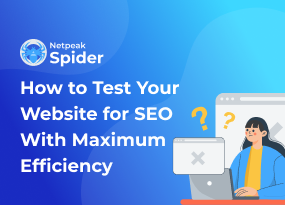Off-Page SEO Techniques a Beginner Should Know
How to
Search engine optimization has for long been one of the most essential things that business owners and marketers should do to gain an edge over the competition. However, to realize the benefits of SEO and get your website at the top of search results, marketers should implement a well-rounded SEO strategy that covers both on-page and off-page techniques.
This article dives into common off-page optimization strategies, including how you can implement them to improve your website’s visibility.
1. What is Off-Page SEO?
Off-page SEO, also known as off-site SEO, encompasses the actions performed outside your website to improve its ranking on the SERPs.
The main aim of executing off-page SEO is to improve how the search engine and users perceive your website in terms of relevance, popularity, authority, and trustworthiness. It involves accumulating positive ranking signals such as links, online reviews, brand mentions, and more to attract various traffic sources.
2. Off-Page SEO Techniques to Drive Organic Traffic
Google takes several off-page signals into account when determining the rank of websites. For this reason, we have put together nine off-page optimization techniques that can help you drive more traffic to your website.
2.1. Build High-Quality Backlinks
Top on our list is quality backlinks, which are by far the most important off-page ranking signals. Backlinks are links that lead to your site from other sites, blogs, and social networks. They are a strong indicator that your blog or website is valuable, trustworthy, and authoritative.
Search engines view these backlinks as an endorsement of site content. As such, a website with many high-quality backlinks will rank higher than one with fewer or low-value backlinks.
To build high-quality backlinks, consider the following:
- Authority of the linking website – links coming from more authoritative sources such as professional bodies, reputable media websites and organizations have more value
- Traffic volume of the website
- Content relevance – links from web pages with content that is more relevant to your industry or brand have greater value
- Anchor text – links whose anchor text is relevant to your content or brand are more valuable
- Number of links to the source – links coming from sites with a large backlink profile are more influential when it comes to SEO
1. How to Size Up Quality of Link Donor For Effective Link Building Campaign
2. How to Conduct Competitor Backlink Analysis for Quick Wins
3. How to Start Link Building from Scratch
4. How to Find The Best Topics for Thematic Link Building on Forums with Netpeak Checker
The bottom line here is to obtain naturally-placed backlinks from authoritative sources.
2.2. Create Shareable Content
High-quality content lies at the heart of every SEO initiative.
Without valuable and shareable content, the vast majority of the on-page and off-page optimization techniques would not work out.
For this reason, every SEO professional should focus on creating rich content worth sharing by the readers. The best content is relevant to the reader and long enough to cover the topic exhaustively.
It is backed with facts, statistics, and visuals to make it more appealing to the reader. By creating this kind of content, more readers are encouraged to share it on social media. Additionally, people can easily generate backlinks to good content on your website.
2.3. Claim Your Google My Business Profile
Getting your website on Google My Business (GMB) is an essential marketing step for every offline business.
If you want to rank for local-based queries like ‘Coffee shop near me’ and generate a decent amount of traffic to your website, then you must claim and optimize your Google My Business profile.
A well-optimized GMB profile shows the most important business information such as brand name, business description, images, exact location address, contact information, opening hours, and more. It should also include a number of positive reviews, which positions your brand as an authority in the industry and boosts your online reputation.
Other than Google my Business, you can consider submitting your website on local business listings and directories such as Yelp or TripAdvisor.
2.4. Encourage Reviews on Third-Party Sites
If you run an online business, you probably know that user reviews are great for SEO. Getting some positive reviews on third-party platforms like TrustPilot or even Facebook is strong evidence of a positive reputation.
These reviews not only make your website look legitimate but also influence user behavior. From an SEO perspective, positive reviews give your website a strong domain authority, which makes it stand out in SERP ranking.
For this reason, website owners should encourage users to rate and review their brand on platforms known for openness and transparency. If you run a website that people cannot review, for instance, regular blogs, you can share any awards or accreditations you’ve won.
2.5. Comment on Other Blogs
Blog commenting is a super-valuable SEO technique for driving traffic to your website. Although some SEO practitioners argue it might turn into a black-hat SEO practice, learning how to comment correctly delivers great results.
The best approach is to look for popular blogs in your industry vertical and leave insightful comments that attract the attention of other readers. You should use a general tone and mention your brand naturally within the body of your answer. This way, you can generate organic traffic to your website without sounding spammy.
2.6. Guest Blogging
Guest blogging is yet another valuable addition to your off-site SEO strategy. It helps create brand awareness and generate valuable backlinks.
For productive guest blogging, start by compiling a list of high ranking websites that accept guest posts in your niche. Next, research each website’s content, audience, style, and tone.
With this information, you can brainstorm some content ideas or topics that match the site’s needs and audience. Once you have some topics ready, get in touch with the brand, and submit your pitch. If you followed all their guidelines for guest-posting, there’s a decent chance that your pitch will be accepted.
When creating your guest post, make sure you insert a link back to your website or blog. Building backlinks to your site is a great way of enhancing brand awareness, increasing traffic, and improving your overall SEO.
2.7. Participate in Forums
There are tons of online platforms and communities that brands and business owners can leverage to increase awareness. These include LinkedIn, Facebook groups, Quora, Reddit, Slashdot, and StackOverflow. Posting and engaging in discussions on these social forums can help drive more traffic to your website.
By sharing highly-informative and thoughtful content on an ongoing basis, you are bound to catch the attention of readers and build a loyal following. As you contribute to these forums, be sure to include links related to your business in a way that adds value to the readers, as opposed to promoting your brand directly.
2.8. Collaborate with Influencers and Thought Leaders
Another effective strategy for driving traffic to your website is by working with influencers and thought leaders in your industry. When you build connections and collaborate with top influencers in online events, group chats, social forums, and other online posts, your brand earns a better reputation.
From an SEO perspective, forming strategic partnerships with influencers brings you even more benefits. Every time an influencer mentions or shares your content, your brand gets more exposure within the online community. This sends more traffic to your website and positions you as an authority in the industry.
Additionally, working with influencers allows you to build strong relationships with high ranking websites, get more followers on social platforms, and increase your reach.
2.9. Feature on Blog Directories
Submitting content on blog and article directories goes a long way when it comes to SEO and traffic generation. However, you must choose a renowned directory and select the right category for your content to ensure it reaches the right audience.
For the best results, always share high-quality content with properly placed keywords and some backlinks to your website. If the content delivers value to readers, then driving organic traffic to your site will be much easier.
Worth a mention is that there are tons of industry-specific directories on the web where professionals with similar interests share their knowledge. Such publications can be a goldmine for valuable traffic since most users operate within your niche or industry. For instance, if you’re a programmer, submitting your blogs on developer-focused platforms such as dzone, dev.to, hackernoon, hashnode, and Betterprogramming can increase your traffic significantly.
The Takeaway
SEO is a broad concept that gives marketers and business owners plenty to explore. Whether you’re working on the on-page or off-page optimization techniques, remember that the two sides of SEO complement each other.
So, no matter how good or strong your off-page SEO game is, it won't be easy to rank higher in the SERP without proper on-site optimization. The best approach is to focus on the fundamentals of link-building and solid-content creation while staying on top of the factors that affect SERP ranking.
By following the above tips, you’ll see a significant improvement in your website’s ranking, organic traffic, and, of course, engagement.


